How to challenge emotional avoidance patterns
Breaking Free: Confronting Emotional Avoidance in Recovery

Understanding Emotional Avoidance and Its Impact
Emotional avoidance patterns are common obstacles in addiction and mental health recovery. Individuals often use avoidance to escape painful feelings, but this can hinder healing and lead to relapse. This article explores how to challenge these patterns through integrated treatment approaches, emotional regulation techniques, and supportive therapies that empower individuals to face emotions constructively and sustain long-term recovery.
Recognizing Emotional Avoidance in Addiction and Mental Health
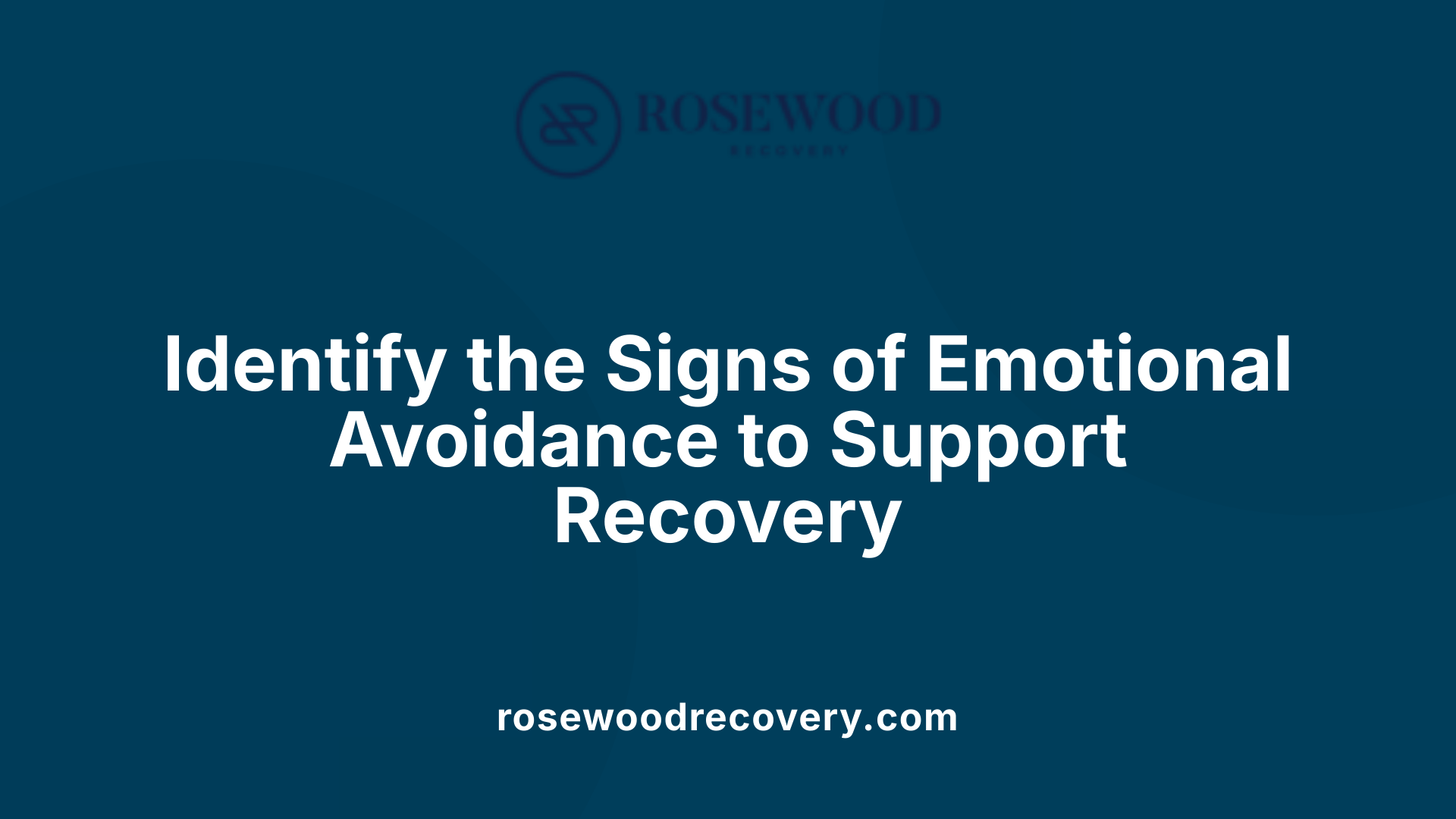
What is emotional avoidance?
Emotional avoidance refers to the tendency to evade or suppress feelings, especially painful or uncomfortable emotions. This behavior often manifests as ignoring emotional needs, bottling feelings, or distracting oneself to escape emotional distress.
How does emotional avoidance appear in substance use and behavioral addictions?
In addiction, emotional avoidance commonly shows through poor self-care habits like isolating, neglecting sleep, and unhealthy eating. Substance use or addictive behaviors—such as gambling or compulsive internet use—may be used as coping mechanisms to numb or escape overwhelming emotions. This avoidance can hinder emotional sobriety and delay effective recovery.
What is the link between emotional avoidance and relapse?
Emotional avoidance often leads to emotional relapse, the first stage in the relapse process. When individuals suppress feelings rather than address them, negative emotions can build up, leading to cravings and harmful behaviors. Recognizing emotional avoidance early enables timely intervention using cognitive therapies and mind-body relaxation techniques, helping develop healthier coping skills and reducing the likelihood of relapse.
What treatment services are effective?
Treatment for substance abuse and mental health issues includes integrated approaches combining counseling, behavioral therapies like cognitive-behavioral therapy (CBT), medication management, and support groups. These services help individuals confront emotional avoidance and build resilience. Supportive environments such as self-help groups, along with relapse prevention strategies, form an essential part of sustaining recovery and managing emotional challenges.
By acknowledging and addressing emotional avoidance, individuals can enhance their emotional regulation, reduce relapse risk, and maintain long-term recovery.
The Role of Emotional Regulation in Challenging Avoidance Patterns
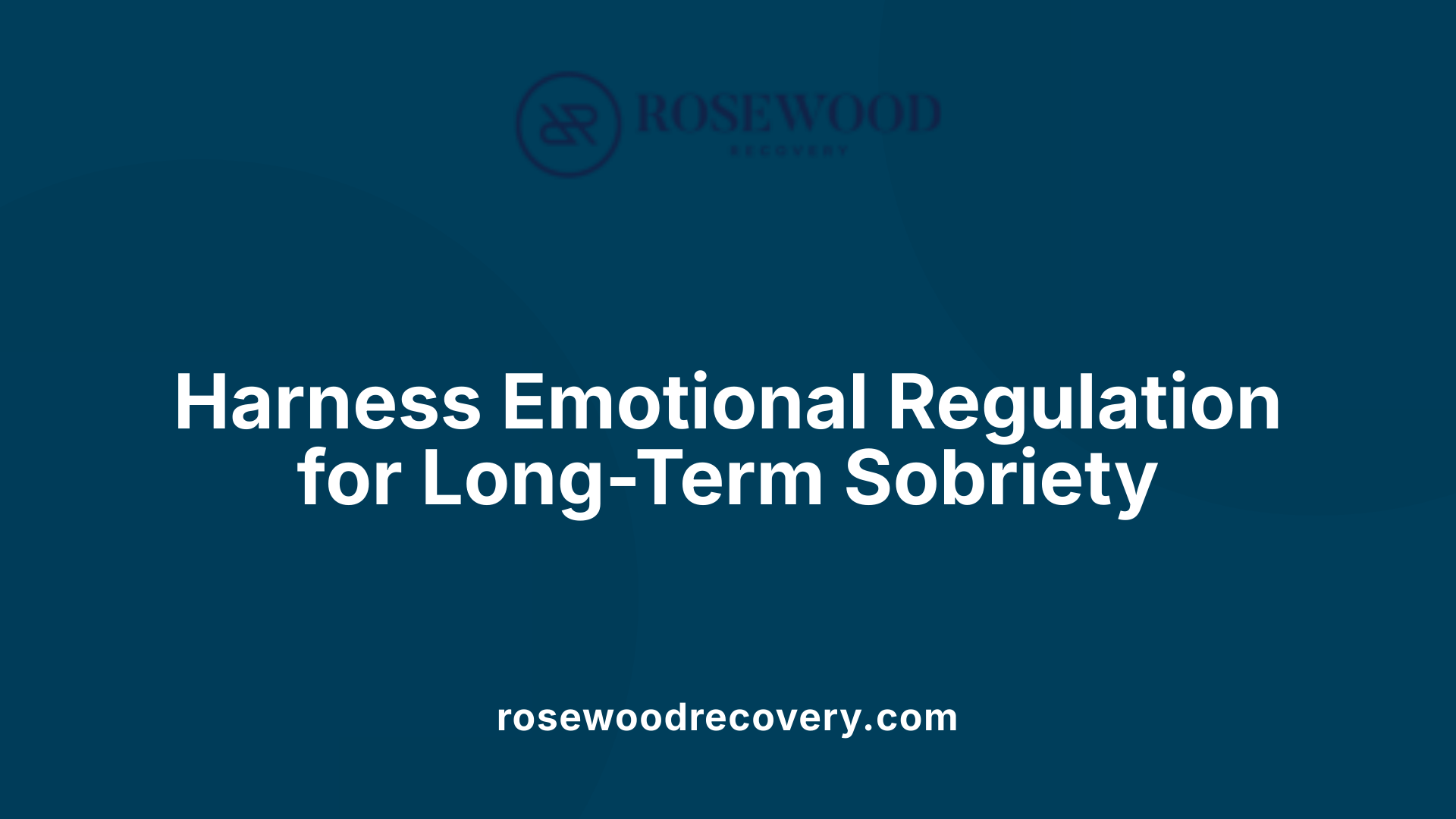
Why Is Emotional Regulation Important in Addiction Recovery?
Emotional regulation plays a central role in addiction recovery because many individuals turn to substances to cope with overwhelming emotions such as stress, anxiety, or depression. Mastering emotional regulation helps individuals recognize these emotional triggers early, allowing them to respond in healthier ways rather than through substance use.
How Do Emotional Triggers and Dysregulation Lead to Avoidance and Relapse?
Emotional dysregulation often leads to avoidance patterns where individuals attempt to escape or numb uncomfortable feelings. This avoidance can manifest as cravings and ultimately relapse, particularly when people struggle with mood swings, impulsivity, or co-occurring mental health disorders. When emotions become intense or unmanageable, the urge to self-medicate with substances becomes stronger, making relapse likely without effective coping strategies.
What Is Emotional Sobriety?
Emotional sobriety refers to the ability to manage and navigate emotions without turning to substances. It involves developing resilience, self-awareness, and the capacity to tolerate distress without avoidance. Achieving emotional sobriety supports long-term recovery by fostering healthier coping mechanisms, improving mental clarity, and strengthening relationships.
Together, these aspects highlight that addressing emotional regulation directly challenges avoidance behaviors, reducing relapse risk and promoting sustained recovery.
Stages of Relapse and Emotional Avoidance
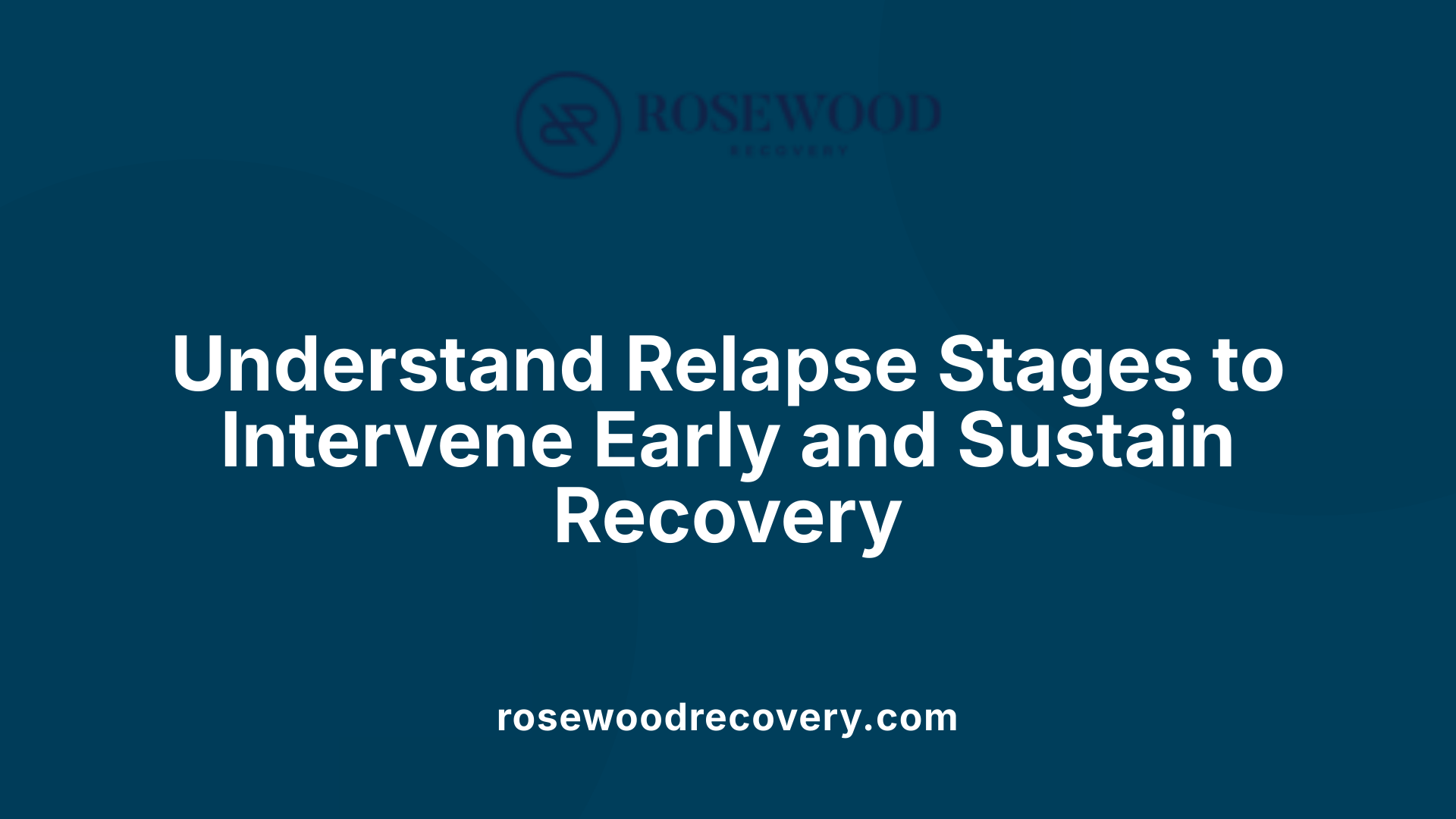
What are the emotional, mental, and physical relapse stages?
Relapse is a gradual process divided into three distinct stages: emotional, mental, and physical relapse.
Emotional relapse happens first and involves poor self-care practices such as bottling up emotions, social isolation, and neglecting sleep or diet. Individuals may not yet use substances, but their emotional well-being deteriorates, increasing risk.
Mental relapse occurs next, marked by cravings, fantasizing about substance use, bargaining, and planning to relapse. Here, a person battles internally with thoughts of using again.
Physical relapse is the actual return to substance use. This stage often follows mental relapse and can be opportunistic in nature. Practicing rehearsed exit strategies can help prevent this final step.
How does emotional avoidance fit into the emotional relapse stage?
Emotional avoidance is a central theme of emotional relapse. When individuals suppress or ignore their feelings, they fail to manage stress and negative emotions effectively. This bottling up leads to poor self-care behaviors like isolation and neglect, which are early warning signs of impending relapse. Emotional avoidance prevents healthy coping, making individuals vulnerable to urges and eventual substance use.
Why is recognizing early warning signs important?
Relapse begins weeks or even months before actual substance use. Spotting early symptoms such as emotional withdrawal, increased stress, or poor self-care enables timely intervention. Early recognition improves the likelihood of success by allowing individuals and their support systems to apply coping strategies and therapies like cognitive behavioral techniques and relaxation practices before the relapse escalates.
Understanding these stages and addressing emotional avoidance through self-awareness and mindfulness is vital for sustaining long-term recovery and preventing relapse.
Evidence-Based Therapies to Address Emotional Avoidance
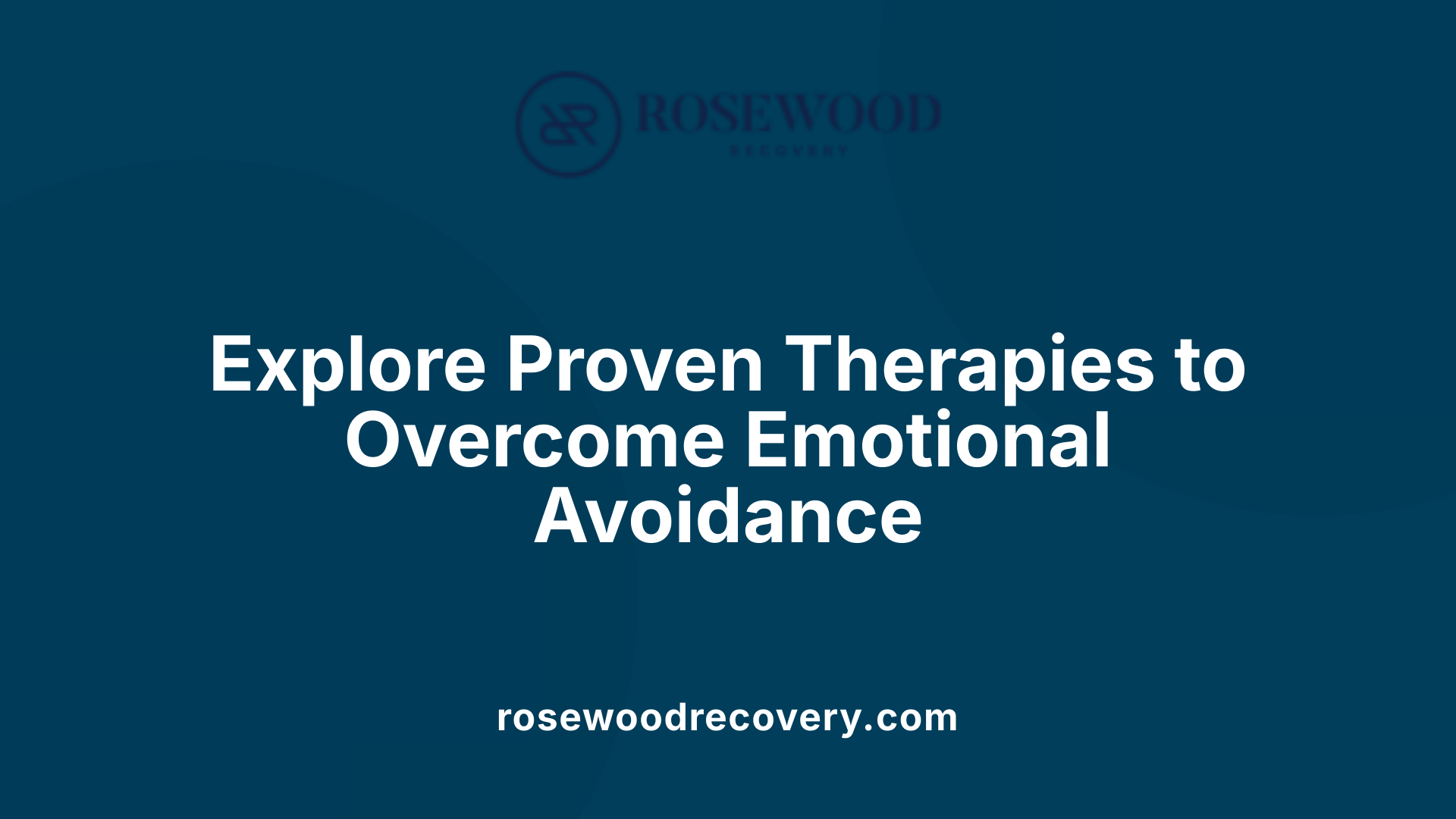
What treatment approaches help with emotional avoidance in addiction?
Properties such as emotional avoidance play a significant role in maintaining addiction behaviors, both in substance use and behavioral addictions like gambling or internet use. Evidence-based therapies focus on improving emotional awareness and regulation to combat these challenges.
How does Cognitive-Behavioral Therapy (CBT) work?
CBT targets negative thinking patterns that contribute to emotional distress and addictive behaviors. By reshaping thoughts like catastrophizing and self-labeling, it strengthens coping skills and reduces cravings. This therapy is widely used across addiction types to help individuals better manage triggers.
What role does Dialectical Behavior Therapy (DBT) play?
DBT complements CBT by teaching skills in mindfulness, distress tolerance, emotion regulation, and interpersonal effectiveness. These skills specifically address emotional avoidance by empowering individuals to face uncomfortable feelings without resorting to addictive behaviors. DBT's evidence base supports its use in managing intense emotions linked to relapse.
How is Emotion-Focused Therapy (EFT) applied?
EFT explores the emotional roots of addiction, fostering healthy emotional expression and helping clients process underlying feelings that might drive addictive behaviors. This approach assists individuals in developing emotional resilience essential for long-term recovery.
What about Rational-Emotive Behavior Therapy (REBT)?
REBT addresses irrational beliefs and dysfunctional emotions by promoting rational thinking. It helps individuals identify and change distorted beliefs like fear or all-or-nothing thinking, which often fuel emotional avoidance and relapse risk.
How do mindfulness-based approaches support recovery?
Mindfulness-based therapies teach clients to observe and accept their emotions without judgment. Practices like meditation and breathing exercises enhance self-awareness, reduce impulsive reactions, and provide healthier alternatives to escape emotional pain. They are integral in managing urges and sustaining sobriety.
How do treatment programs address various forms of addiction beyond substance abuse?
Specialized treatment programs combine these therapies with peer support groups, family interventions, and, when appropriate, medications to comprehensively address behavioral addictions. They emphasize prevention, early intervention, and developing tailored coping strategies to manage the complex emotional and behavioral patterns involved.
Together, these therapies form a multi-faceted approach that enables individuals to confront and manage emotional avoidance effectively, thereby reducing relapse rates and improving emotional well-being across different addiction types.
Mindfulness and Meditation as Tools for Emotional Awareness

How Mindfulness Enhances Self-Awareness
Mindfulness teaches individuals to stay present and fully engage with their current experiences without judgment. By focusing attention on the moment, it allows for greater self-awareness of emotional states, bodily sensations, and thought patterns. This increased awareness helps individuals identify early emotional triggers and cravings related to substance use before they escalate.
Role of Meditation in Reducing Impulsivity and Cravings
Meditation practices cultivate calmness and emotional balance, which in turn reduce impulsive behaviors often linked to relapse. Regular meditation strengthens the brain's ability to regulate stress and anxiety, lowering the intensity of cravings. As a result, individuals gain better control over urges to use substances and can respond more thoughtfully rather than react impulsively.
Practice of Delayed Gratification and Cognitive Reframing
Mindfulness and meditation support the development of delayed gratification by helping individuals observe cravings or discomfort without immediately reacting. Techniques like deep breathing and cognitive reframing empower them to reinterpret distressing thoughts in a more constructive way. This shift in perspective enables healthier decision-making aligned with long-term recovery goals, rather than short-term relief through substance use.
The Power of Self-Care in Overcoming Emotional Avoidance
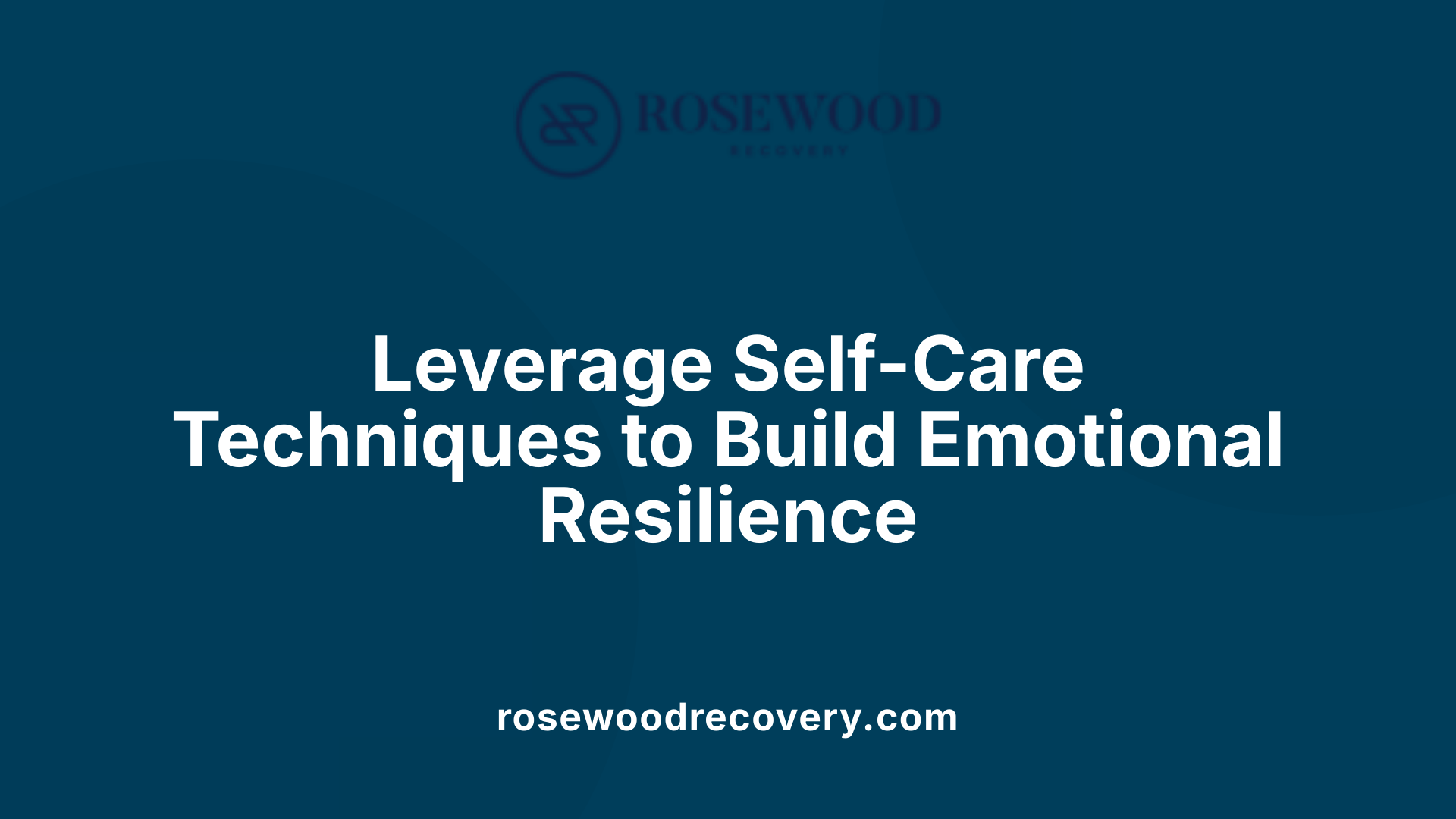
What Are Mind-Body Relaxation Techniques and How Do They Help?
Mind-body relaxation techniques encompass practices like meditation, deep breathing, and mindfulness. These methods help calm the nervous system, reduce stress, and increase self-awareness. By engaging in these activities, individuals can better manage emotional triggers that often precede relapse.
Why Are Sleep, Diet, and Stress Management Vital?
Good self-care involves prioritizing restorative sleep, balanced nutrition, and effective stress management. Poor sleep or diet can fuel emotional relapse by making individuals more vulnerable to negative feelings and cravings. Managing stress through relaxation or supportive routines reduces anxiety and emotional overwhelm—common relapse triggers.
What Healthy Activities Support Emotional Stability?
Alternative coping mechanisms such as regular exercise, journaling, creative pursuits, and engaging hobbies offer constructive outlets for emotions. These activities not only provide distraction but also foster emotional resilience by allowing individuals to experience joy and accomplishment outside of substance use.
Incorporating these self-care strategies strengthens emotional sobriety, helping individuals overcome avoidance of difficult feelings. This foundation promotes long-term recovery by encouraging healthier emotional regulation, minimizing relapse risk through sustained well-being and inner balance.
Building Emotional Resilience through Support Networks
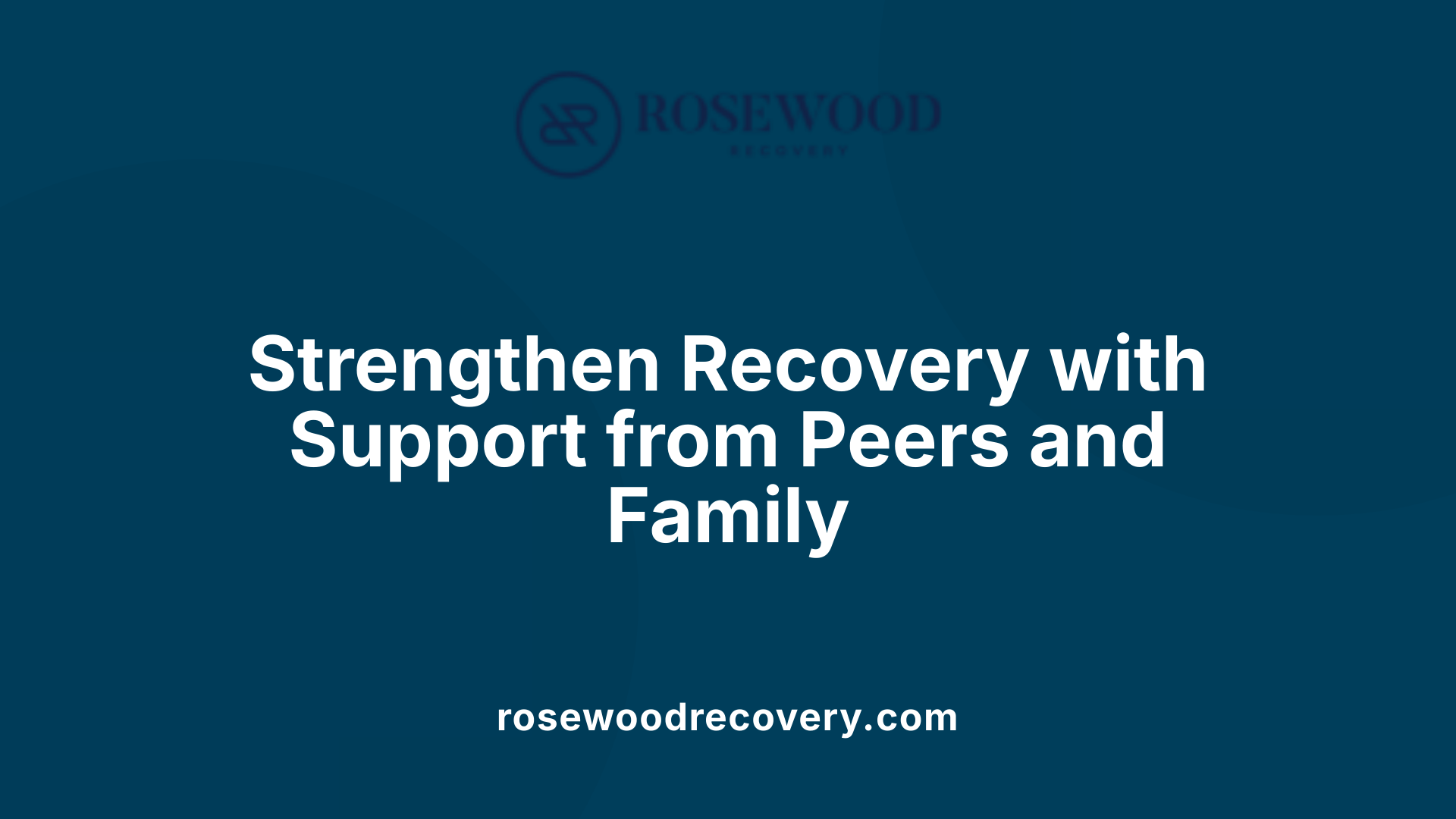
Why are peer support groups like AA and NA important?
Peer support groups such as Alcoholics Anonymous (AA) and Narcotics Anonymous (NA) play a significant role in emotional sobriety and recovery. These groups provide a community where individuals share experiences, foster accountability, and gain empathy from others facing similar challenges. The sense of belonging and mutual understanding helps reduce feelings of guilt and shame, making it easier to manage emotional triggers and maintain long-term sobriety.
How does family involvement benefit recovery?
Family involvement is a powerful source of emotional stability. Open communication, family therapy, and family-based interventions such as Multisystemic Therapy and Functional Family Therapy help improve family dynamics and address environmental factors contributing to substance use and mental health issues. Supportive families promote trust and respect, offer encouragement, and contribute to building emotional resilience during recovery.
What is the role of social support in emotional sobriety and recovery?
Social support—whether from peers, family, or professionals—is critical to managing emotional challenges without resorting to substance use. It fosters emotional regulation by offering practical help, guidance, and validation. Feeling supported lessens isolation and the temptation to relapse, while encouraging positive lifestyle changes and participation in meaningful activities, all of which enhance overall emotional well-being and sustained recovery.
Integrated Care: Combining Treatments for Co-Occurring Disorders
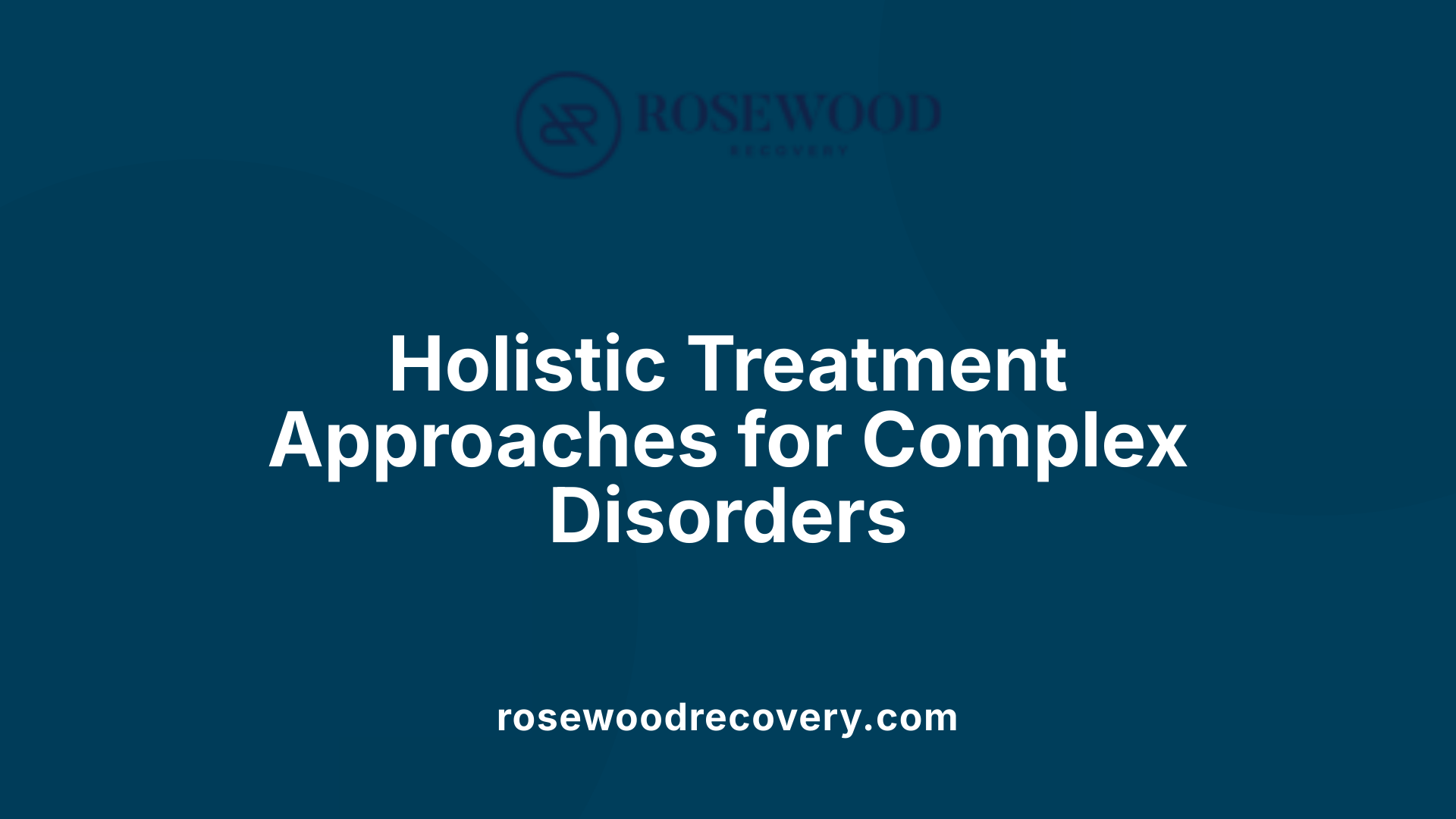
Why is comprehensive assessment crucial for co-occurring disorders?
Co-occurring mental health and substance use disorders often have overlapping symptoms, making accurate diagnosis essential. A thorough and experienced assessment helps distinguish between conditions, ensuring that treatment is appropriately tailored. Without this, symptoms might be mistakenly attributed to one disorder, delaying effective intervention.
How do behavioral therapies and medications work together?
Effective integrated care combines behavioral therapies such as cognitive behavioral therapy (CBT), motivational interviewing, and contingency management with medication treatments. These medications can target addictions, like opioids or alcohol dependence, while also managing mental health symptoms. Using both methods together enhances treatment outcomes by addressing biological, psychological, and behavioral aspects of addiction and mental health.
Why is coordination of mental health and substance use disorder services important?
Integrated care means mental health and substance use treatments are coordinated within a unified approach. This ensures consistent communication among providers, reduces treatment gaps, and provides comprehensive care management. Having coordinated services helps individuals receive holistic support, addressing all aspects of their health and improving their chances of long-term recovery.
Integrated care is becoming the standard for those facing co-occurring disorders, emphasizing the need for accurate diagnosis, combined therapeutic strategies, and seamless service delivery to optimize recovery outcomes.
Challenging Negative Thought Patterns to Break Avoidance
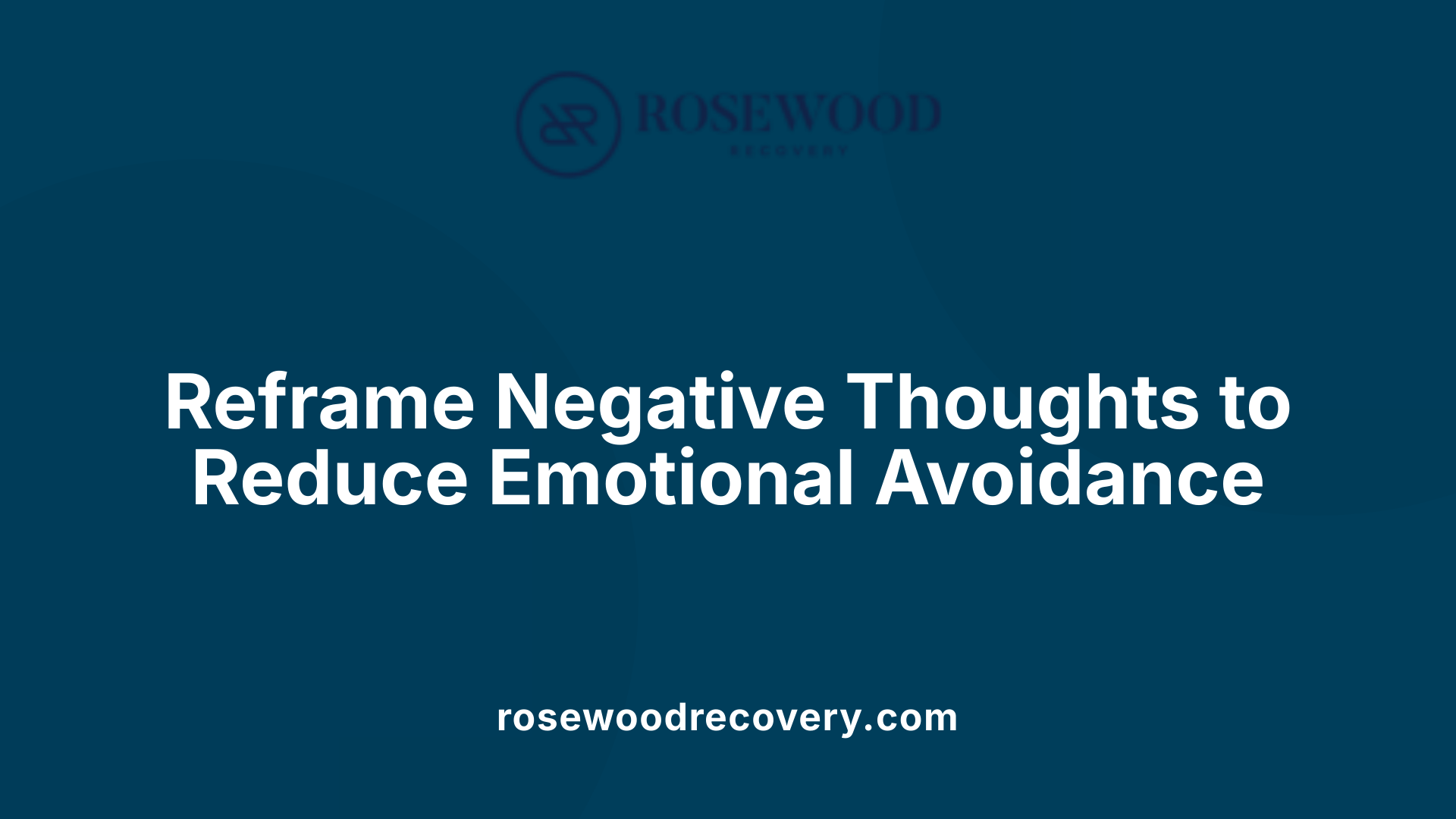
What is cognitive restructuring and how does it help?
Cognitive restructuring is a therapeutic process designed to identify and change negative thought patterns that fuel emotional distress and substance use. By recognizing harmful thoughts like fear, all-or-nothing thinking, and catastrophizing, individuals learn to replace these with more balanced and realistic perspectives. This shift supports healthier coping and reduces the urge to avoid difficult emotions through substance use.
How do fear, all-or-nothing thinking, and catastrophizing contribute to relapse?
Fear often triggers avoidance behaviors that can lead to relapse. All-or-nothing thinking forces people into extremes, such as believing one slip means total failure. Catastrophizing exaggerates problems, making challenges seem insurmountable. These distorted thoughts increase emotional distress, which can push individuals to seek relief through substance use instead of facing the underlying issues.
What techniques help build healthier thought processes?
Effective techniques include:
- Mindfulness, which cultivates self-awareness and acceptance of thoughts without judgment.
- Cognitive Behavioral Therapy (CBT), helping reframe negative beliefs and develop problem-solving skills.
- Dialectical Behavior Therapy (DBT), focusing on emotional regulation and distress tolerance.
- Delayed gratification practices like deep breathing and cognitive reframing to resist immediate cravings.
These approaches empower individuals to challenge avoidance, manage emotions constructively, and support sustained recovery.
| Aspect | Role in Recovery | Techniques Applied |
|---|---|---|
| Cognitive Distortions | Amplify cravings and relapse risk | Cognitive restructuring, CBT, mindfulness |
| Emotional Avoidance | Leads to relapse when unaddressed | Mindfulness, DBT skills, delayed gratification |
| Building Healthy Thoughts | Promotes resilience and self-control | CBT, DBT, expressive arts therapy |
Creative Therapies Facilitating Emotional Expression
What is Expressive Arts Therapy and How Does It Help?
Expressive arts therapy uses creative activities like painting, drawing, music, dance, and writing to facilitate emotional expression and healing. Instead of relying solely on verbal communication, it encourages individuals to explore and express emotions non-verbally. This creative outlet allows people to access deeper feelings, process trauma, and foster self-discovery in a supportive environment.
How Does Emotion-Focused Therapy Support Emotional Regulation?
Emotion-focused therapy (EFT) centers on exploring and understanding the emotional roots of addiction and mental health challenges. By identifying and expressing suppressed emotions, individuals learn healthier ways to manage their feelings rather than turning to substances. EFT fosters emotional resilience and helps replace harmful coping mechanisms with adaptive strategies, enhancing overall emotional well-being.
Why Are Creative Outlets Important in Recovery?
Creative outlets provide meaningful activities that engage the mind and body, which can divert attention from cravings and stress. Engaging in expressive arts promotes self-awareness and emotional processing, helping individuals recognize and regulate their feelings effectively. This process supports emotional sobriety and contributes to sustained recovery by nurturing personal growth and encouraging healthy ways to manage difficult emotions.
Sustaining Recovery: Continual Growth and Emotional Sobriety
Why Is Ongoing Education and Personal Growth Important in Recovery?
Continual education and personal growth are essential elements for maintaining emotional sobriety and preventing relapse. They allow individuals to expand their coping strategies, develop new perspectives, and build resilience. Learning about emotional regulation, new therapeutic techniques, and recovery strategies enhances self-awareness and empowers ongoing recovery efforts.
How Do Meaningful Activities and Hobbies Support Recovery?
Engaging in meaningful activities, hobbies, or volunteer work provides purpose and joy beyond addiction. These pursuits replace unhealthy habits with positive outlets that promote emotional well-being. They help reduce stress and boredom, which are common relapse triggers. Activities like exercise, meditation, creative arts, and journaling serve as healthy means to manage emotions and maintain motivation.
What Are Long-Term Strategies to Maintain Emotional Balance and Prevent Relapse?
Maintaining emotional balance involves several long-term strategies:
- Practicing self-care: Prioritizing good sleep, nutrition, and stress management.
- Building positive relationships: Establishing trust and respect in social connections.
- Using emotional regulation techniques: Such as mindfulness, deep breathing, and cognitive reframing.
- Participating in support groups: Accessing community and accountability through groups like AA or NA.
- Adhering to recovery principles: Staying honest, asking for help, and avoiding rule-bending.
All these approaches contribute to emotional stability and reduce the likelihood of relapse by addressing triggers before they escalate.
Together, ongoing learning, purposeful engagement, and effective emotional regulation form a foundation for sustained recovery and emotional sobriety over the long term.
Moving Beyond Avoidance: Toward Lasting Emotional Health
Challenging emotional avoidance patterns is pivotal for successful recovery from addiction and mental health issues. Through recognizing avoidance behaviors, developing emotional regulation, and engaging in evidence-based therapies, individuals can build emotional resilience and maintain sobriety. Self-care, supportive communities, and integrated care approaches further reinforce healing. Ultimately, sustained recovery demands ongoing commitment to growth, emotional awareness, and healthier coping strategies that enable individuals to face life’s challenges with courage and balance.
References
- Relapse Prevention and the Five Rules of Recovery - PMC
- Finding Help for Co-Occurring Substance Use and Mental ...
- Emotional Sobriety in Recovery
- Emotional Regulation in Addiction Treatment at Antrim, NH
- Emotional Regulation in Recovery | Addiction Treatment
- Addiction as a Coping Mechanism and Healthy Alternatives
- FindTreatment.gov: Home
- Chapter 5—Specialized Substance Abuse Treatment ...
More Articles
Recovery Begins Here
Click below to get in touch and schedule a consult call with our team to begin your journey towards happiness and freedom.
Rosewood Recovery does not discrimate against any person because of the race, color, religious creed, ancestry, age, sex, sexual orientation, gender identity, national origin, handicap or disability or the use of a guide or support animal because of the blindness, deafness or physical handicap.





